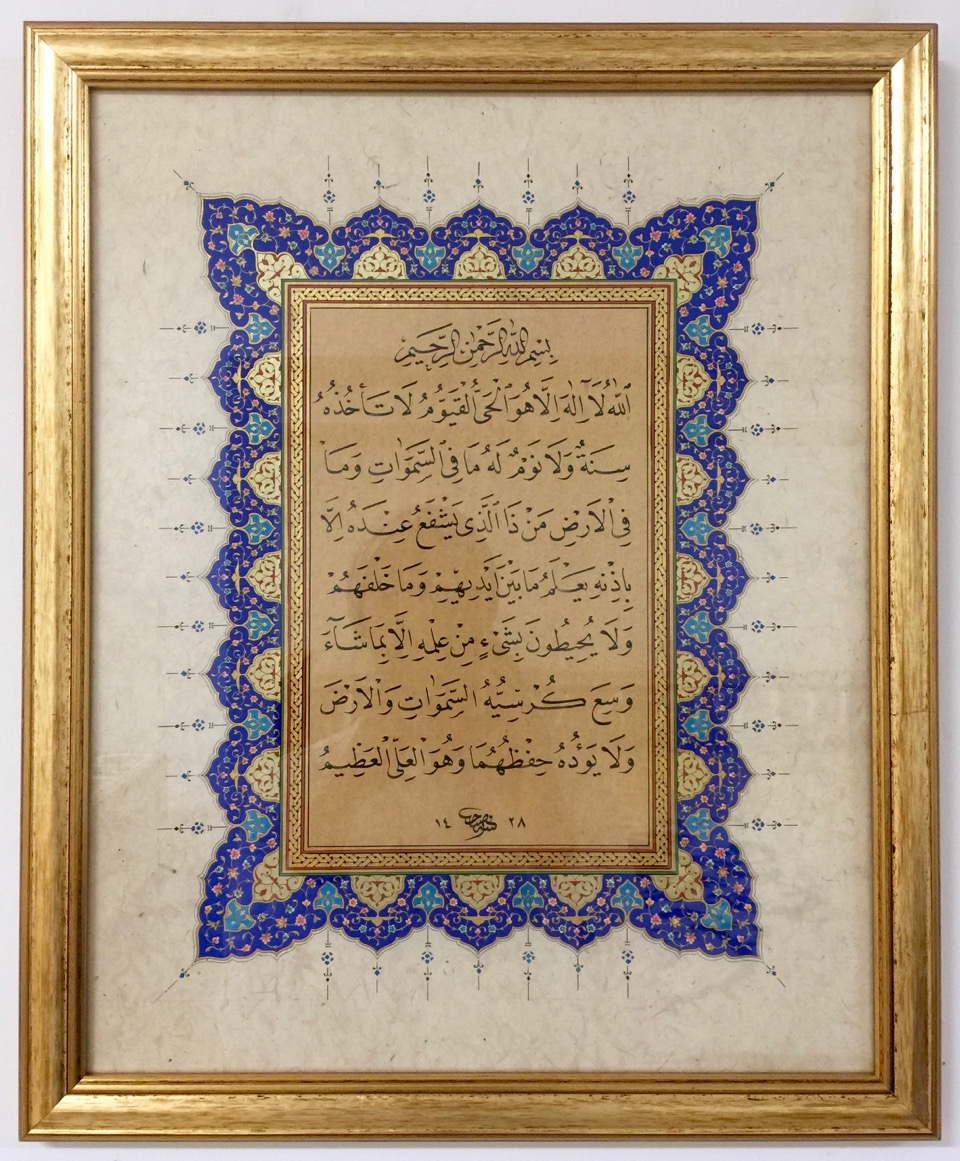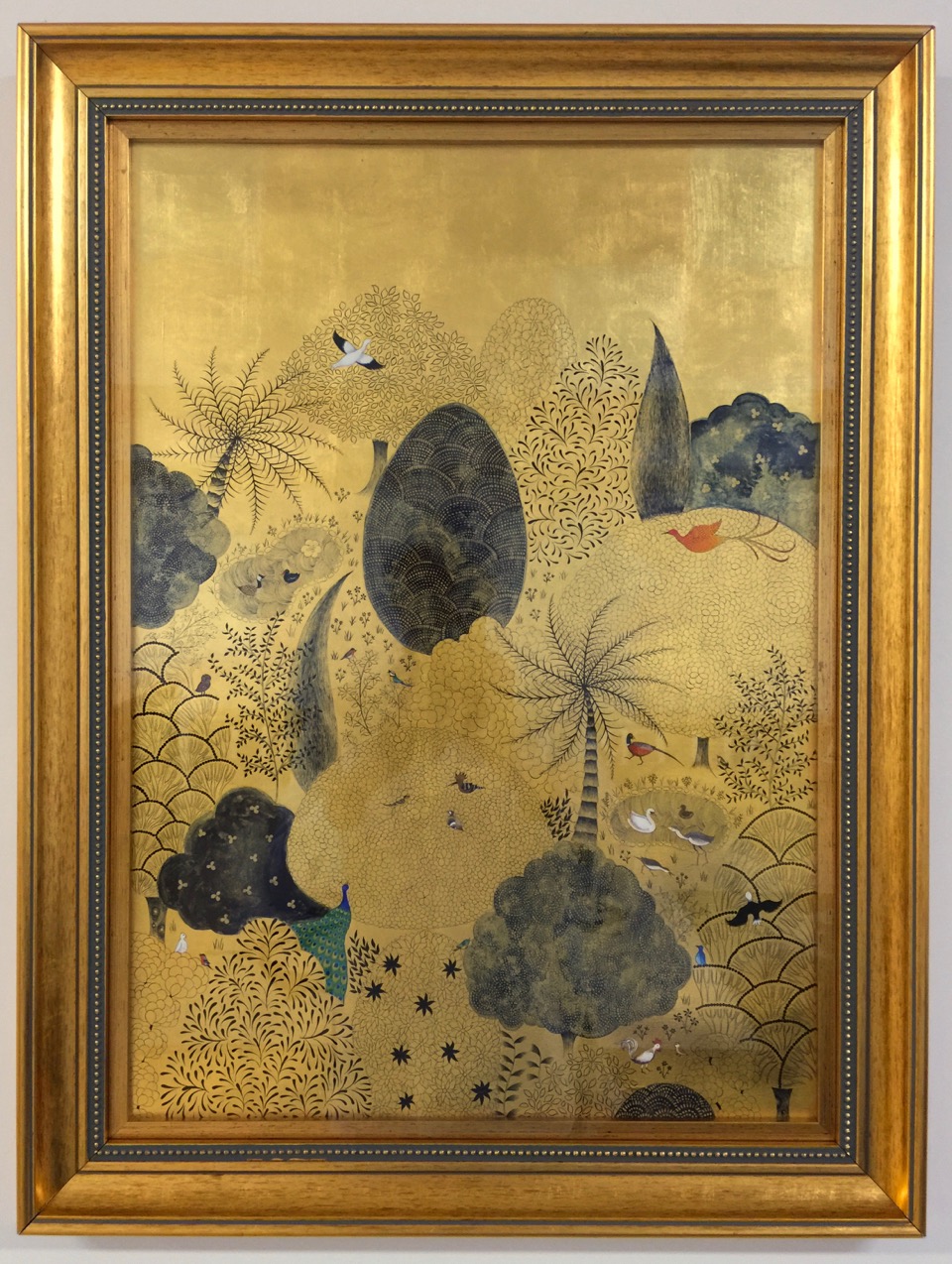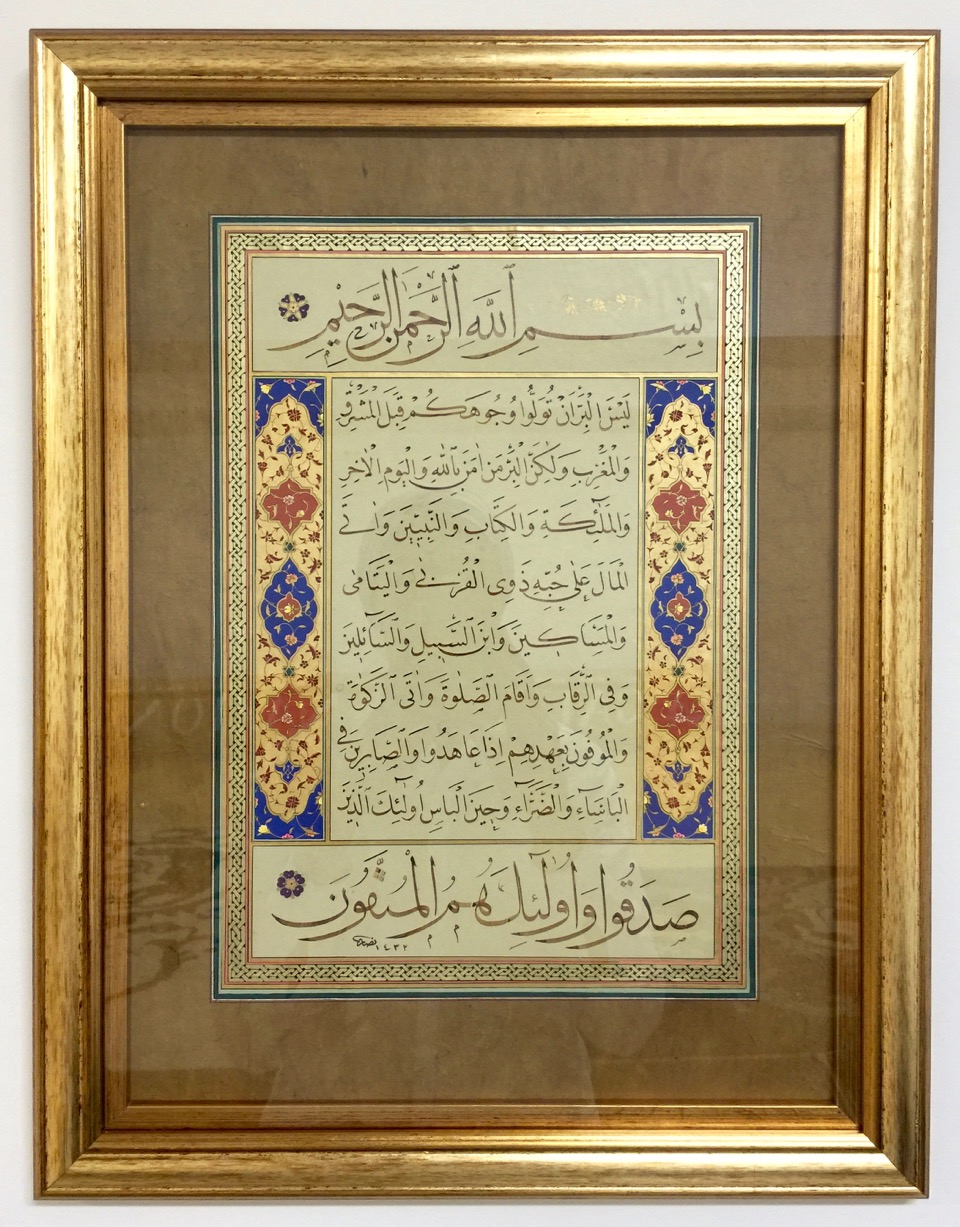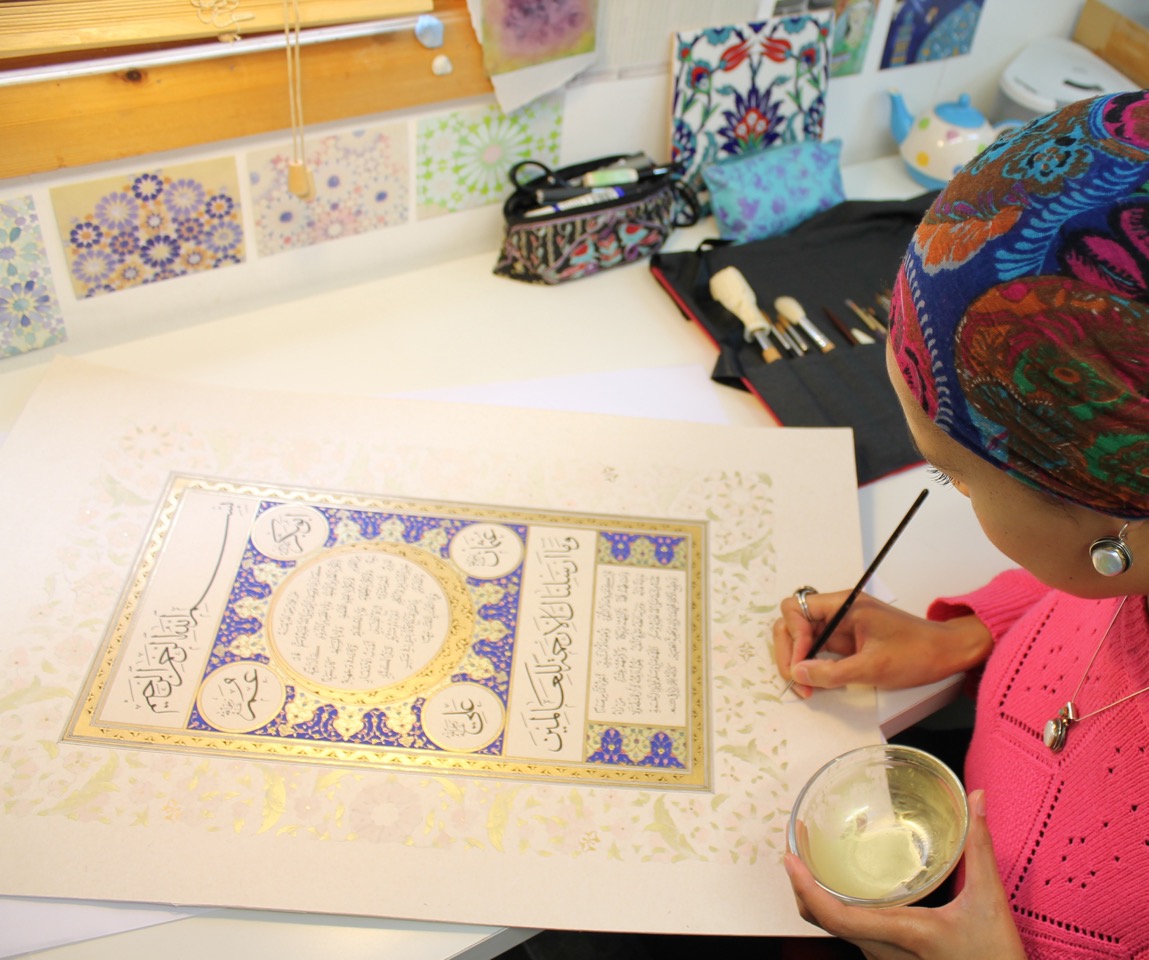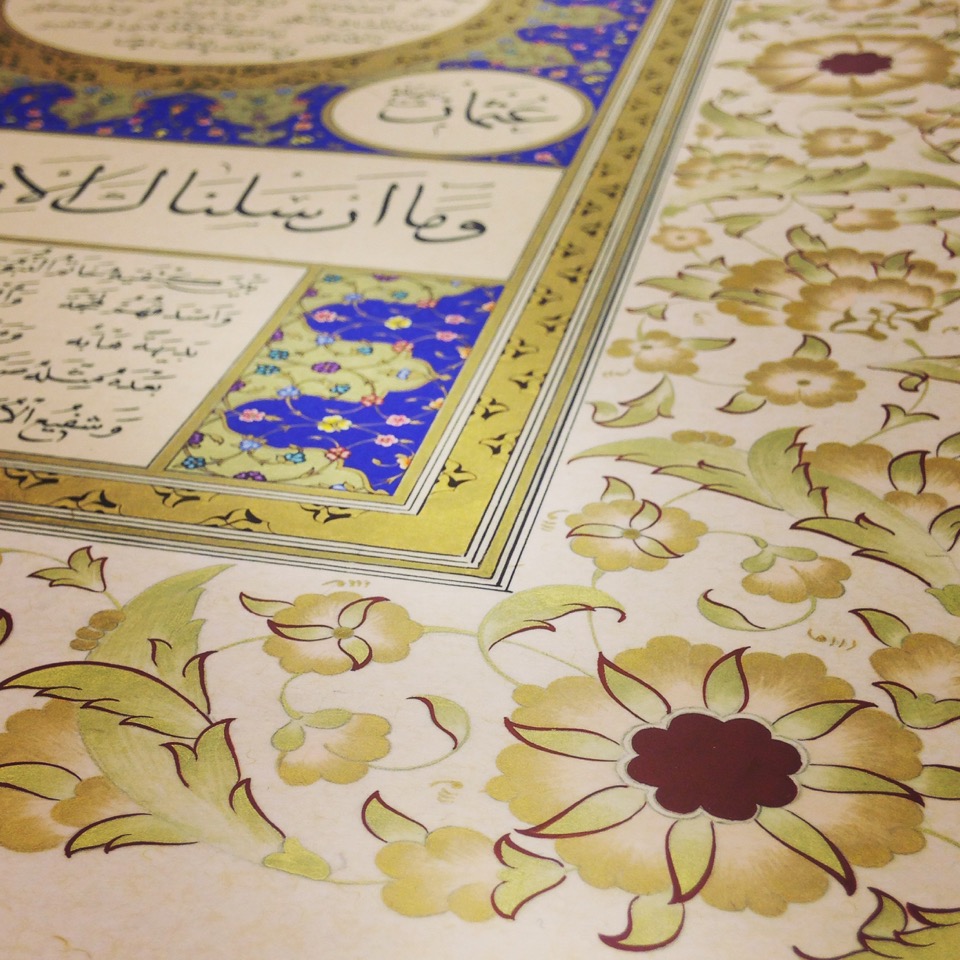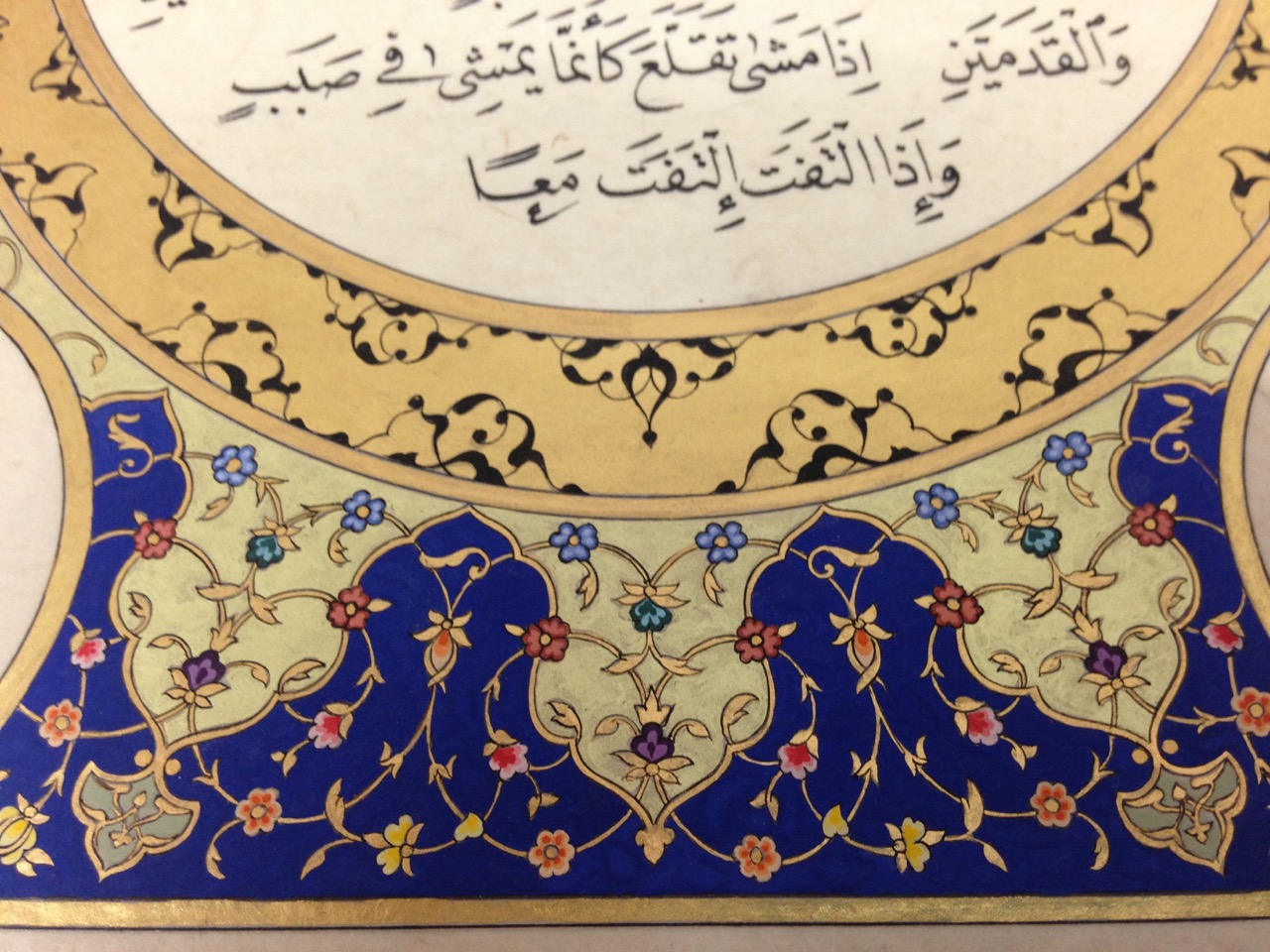Ayesha Gamiet’s work reflects balance, elegance and her deep connection to spirituality. Her journey to art began at a very early age while growing up in a creative household. And, later fostered through her exposure to diverse cultural arts from the Islamic world while studying and during her travels, in particular to the Alhambra palace in Granada, Spain.
Ayesha is an U.K based artist, educator and illustrator. She holds a B.A in African and Asian Art History and Archaeology from the University of London, a Master’s Degree in Traditional and Islamic Arts and a second Master’s Degree in Education (with a focus on Art, Creativity and Culture in Education) at the University of Cambridge. Ayesha recently received her Ijazah (diploma) in tezhib (Art of Illumination) in Turkey from her teacher, renowned illumination artist Ayten Tiryaki. She teaches and exhibits internationally.
I recently reached out to Ayesha for an interview, which she very graciously accepted. She shared her background in art, her creative process and offered valuable advice for students just getting started in tezhib.
What inspired you to study art?
I’ve loved painting and drawing for as long as I can remember, and I was always busy with my paints and coloring pencils as a child! Studying art felt natural for me. My Father achieved a diploma in Fine Art from the University of Cape Town, but growing up in Apartheid South Africa, he was prevented from studying further due to the color of his skin. When my parents moved to the UK, where I was born, my Dad used to illustrate books for children, so I grew up in a creative household. My parents encouraged us in all of our interests - they just wanted us to be happy and fulfilled. I’m very grateful for that freedom and support. As well as the visual arts, I’ve always had a passion for literature and culture, so when it came to choosing my degree, I settled upon a BA in African and Asian Art History and Archaeology at SOAS (the School of Oriental and African Studies in London). This gave me my first real introduction to Islamic art, albeit from a theoretical perspective. On a trip to Spain, I fell in love with the Alhambra Palace in Granada, and realized that I wanted to be making Islamic art, not just writing about it! This led to a practice-based MA in Visual Islamic and Traditional Arts at the Prince’s School in London. Here I discovered the beauty of tezhib and miniature painting. I also studied traditional Islamic geometry, Arabic and Western calligraphy, marquetry, and ceramics. It was an incredible two years, and I loved every minute. During that time, I travelled to Istanbul to research the art of tezhib in greater depth. I’ve been studying with my Master, Ayten Tiryaki ever since, and I travel to Istanbul regularly to take classes, and research further. Earlier this year, just over 10 years after my first visit to Istanbul, I received my ijaza, and I feel as though things are just beginning. This art is so rich and exquisite, you will never stop learning.
So in answer to your question, art and creativity have always been an important part of my life. I think the inspiration to follow this path has been fueled by a desire to be fulfilled creatively and spiritually. The practice of Islamic art combines these elements so completely, and in such beautiful ways, I’m sure I’ll always be learning more and creating more. The learning never stops, and the possibilities are infinite.
If someone wants to become a traditional tezhib artist, what is most important thing to keep in mind?
A deep love of Islamic art and culture, plus patience, patience, patience, and perseverance, perseverance, perseverance! Keen eyesight and a steady hand are also very helpful. Talent and good technique give an advantage, but I truly believe that love, patience, and perseverance are still more important. When things get really tough, it’s sheer love of the art, and the will to patiently persevere out of love that will bring you back to your practice. There are no shortcuts, just hard work, and surrendering to the discipline of the craft. If you love what you do, and persevere in the right spirit, the hard work becomes a pleasure. It’s worth every minute.
What inspires you to come up with your compositions?
I’m not entirely sure where inspiration comes from! It’s something of a mystery. In tezhib, we always start with the calligraphy, and try to create a composition that is complementary, without overwhelming the text. The Divine word is always the most important aspect, and the tezhib should be in harmony, not a distraction. My usual practice is to try several ideas, then develop and refine the composition until I reach a design that feels harmonious. It’s hard to pinpoint where the inspiration comes from. Often it’s more a case of working through the process until the design feels complete.
I find it very helpful to study and research tezhib designs past and present. I love visiting museums, galleries, and libraries to see masterpieces from the world of tezhib. These are important resources. I’ve been fortunate to have had many opportunities for travel in the course of my work, so when I’m away, I make it my business to visit the Islamic art collections of Istanbul, Doha, Cairo and Kuala Lumpur amongst others. I also love visiting Islamic architecture and monuments, and I attend many exhibitions, both contemporary and traditional. I love meeting with other artists and learning more about their processes and creative practice. This inspires me to try new things, and perhaps approach my work from a different angle.
In terms of colors and pigments - I am very inspired by the natural world. I’ve just made my own set of watercolors by grinding pure pigments with gum Arabic and water. The colors have turned out beautifully, and I intend to use these in future tezhib, illustration, and miniature painting work. Many of the colors are natural, and would have been used by tezhib artists of the past. I’m very excited to use the lapis watercolor - it’s made from pure lapis lazuli, which naturally contains pyrite, commonly known as “fools gold". This gives a really beautiful, subtle gold glimmer to the deep blue lapis, like a starry sky. For this reason, lapis has always been associated with the Heavens. Very appropriate for the art of tezhib, which adorns Qur’anic and other sacred texts. The commercial equivalent of pure lapis watercolor is ultramarine blue. This contains chemicals and fillers which lack the subtle beauty of the natural pigment. For this reason, I’m very keen to reintroduce the process of paint-making and use of pigments into my work. As well as adding beauty, it gives more meaning and depth to the art. Plus, I really enjoy the paint-making process, and the way in which it connects us with the natural world. I think it engenders a sense of love and awe for creation, and the Divine Creator.
Your favorite piece and why? (Your own or artist of your choice or both)
It would be impossible to pick just one! I am in complete awe of the masterpieces of the past, and the artists (many unnamed) who created these works. Qur’ans such as Sultan Baybar’s Mamluk Qur’an (Cairo, 1304-6) are incredible examples of the pinnacle of tezhib art. I think the harmony between the geometry and islimi (free flowing plant and floral motifs) is perfectly balanced, and the work is sublime. Any work that achieves that level of beauty and harmony is a masterpiece in my opinion.
In terms of picking a favorite from my own work, I really couldn’t say. I tend to give whatever I’m working on my full, undivided love and attention, so perhaps the piece I’m working on is always my favorite! Both my hilyes are special, but so too are the pieces leading up to them. Although it’s very clumsy and filled with mistakes, my very first illumination also holds a special place in my heart. When I look at it, I see all the mistakes, and it makes me smile because I remember just how much love went into it, and how hard I persevered just to get to the end.
Gallery of Ayesha's work:
